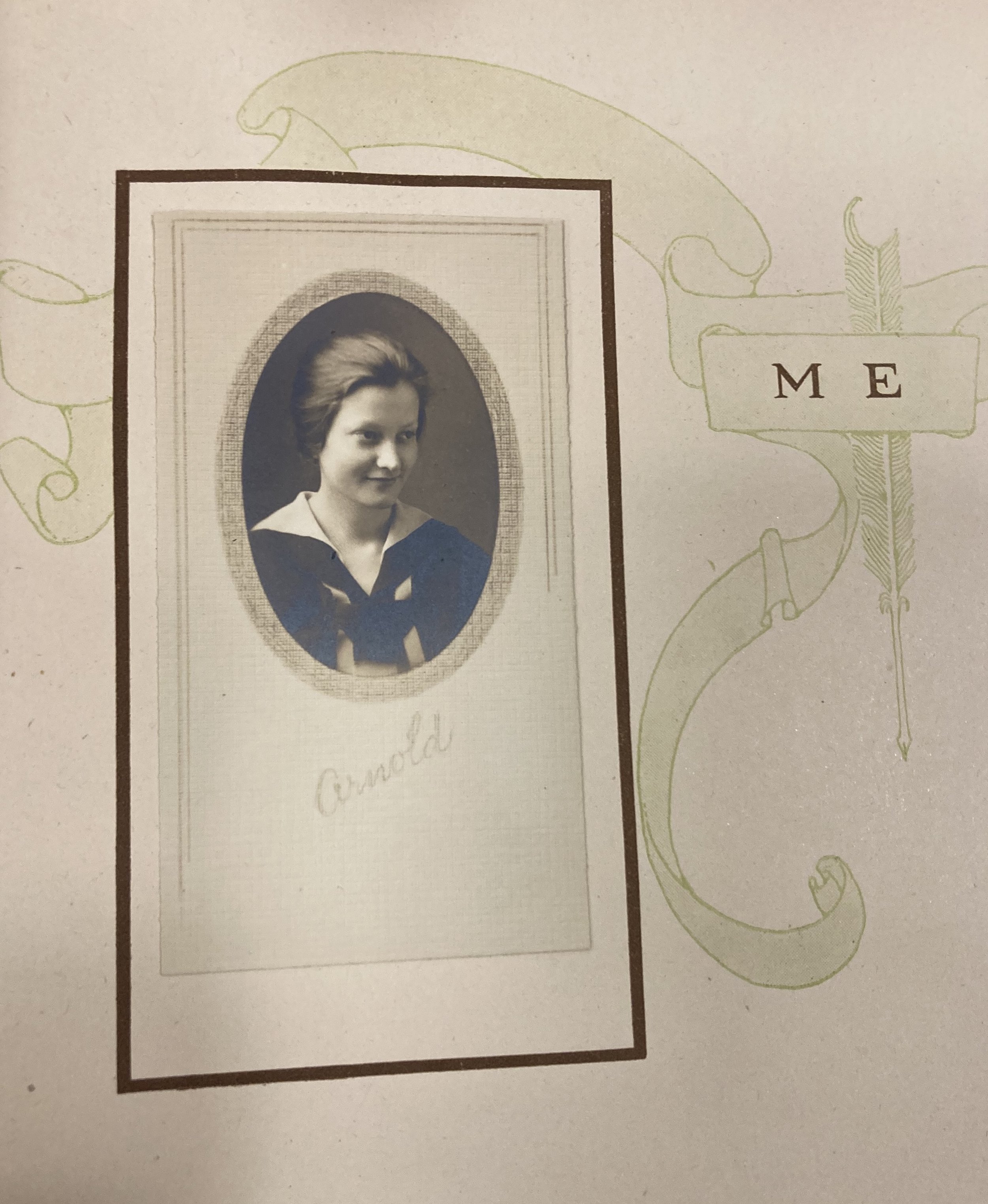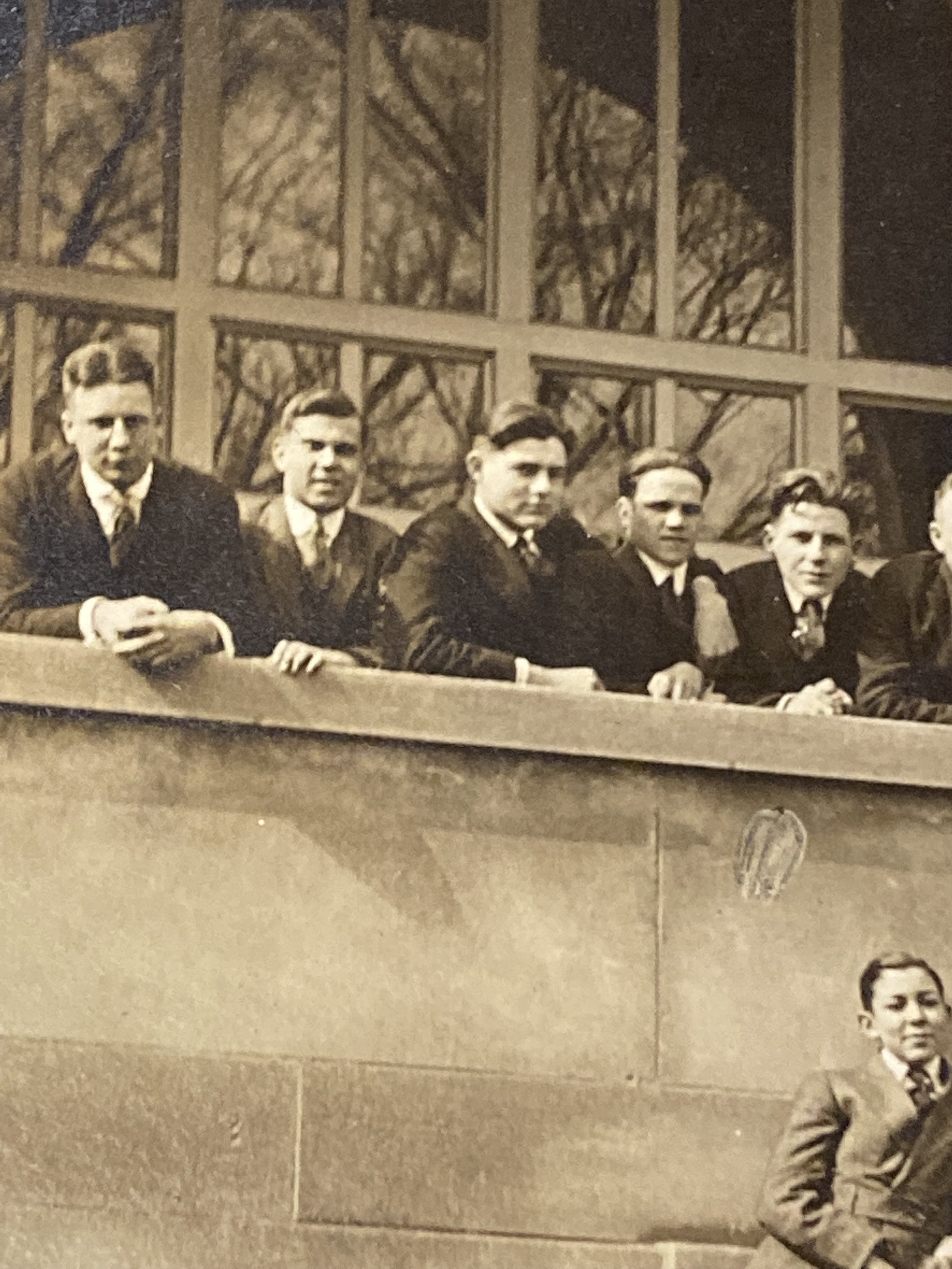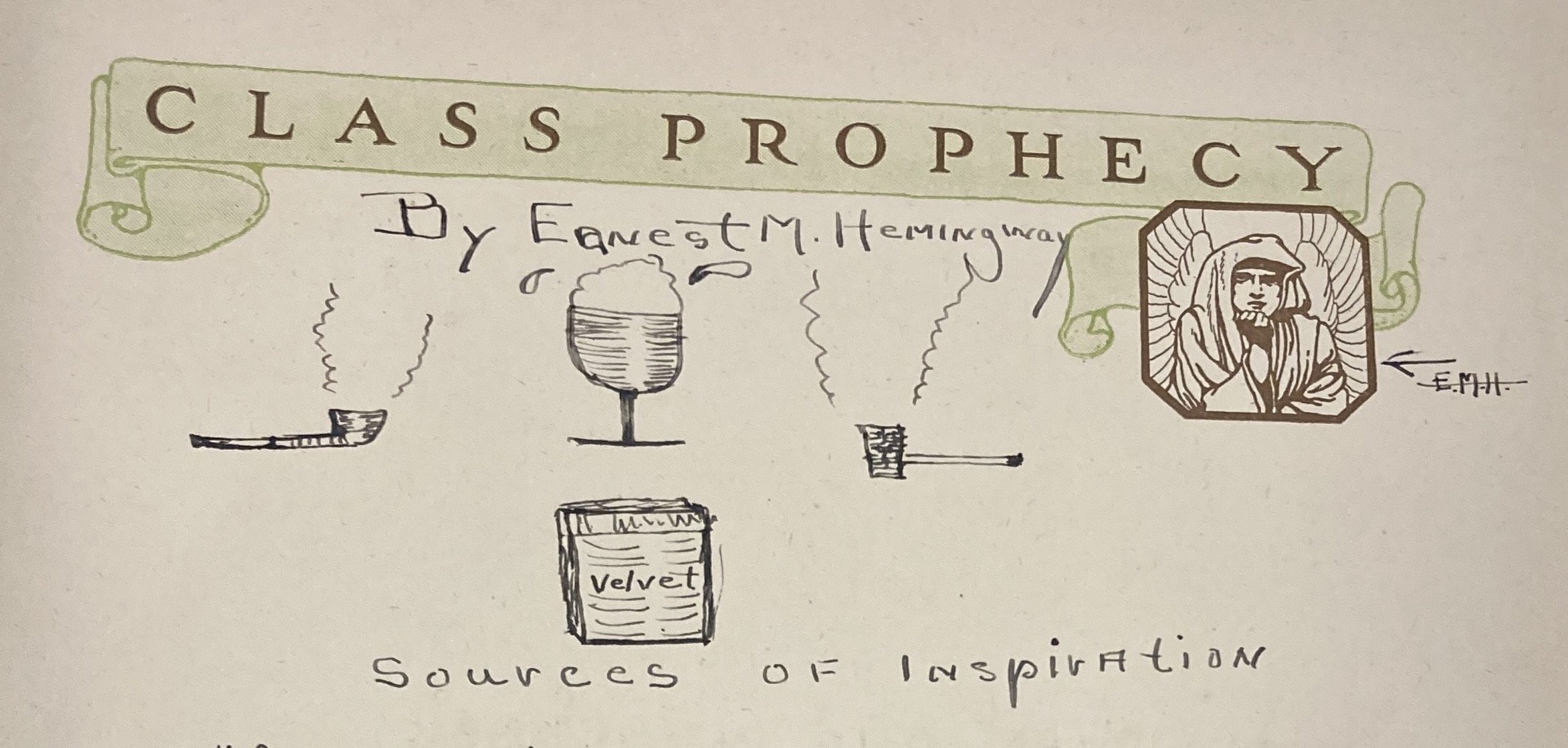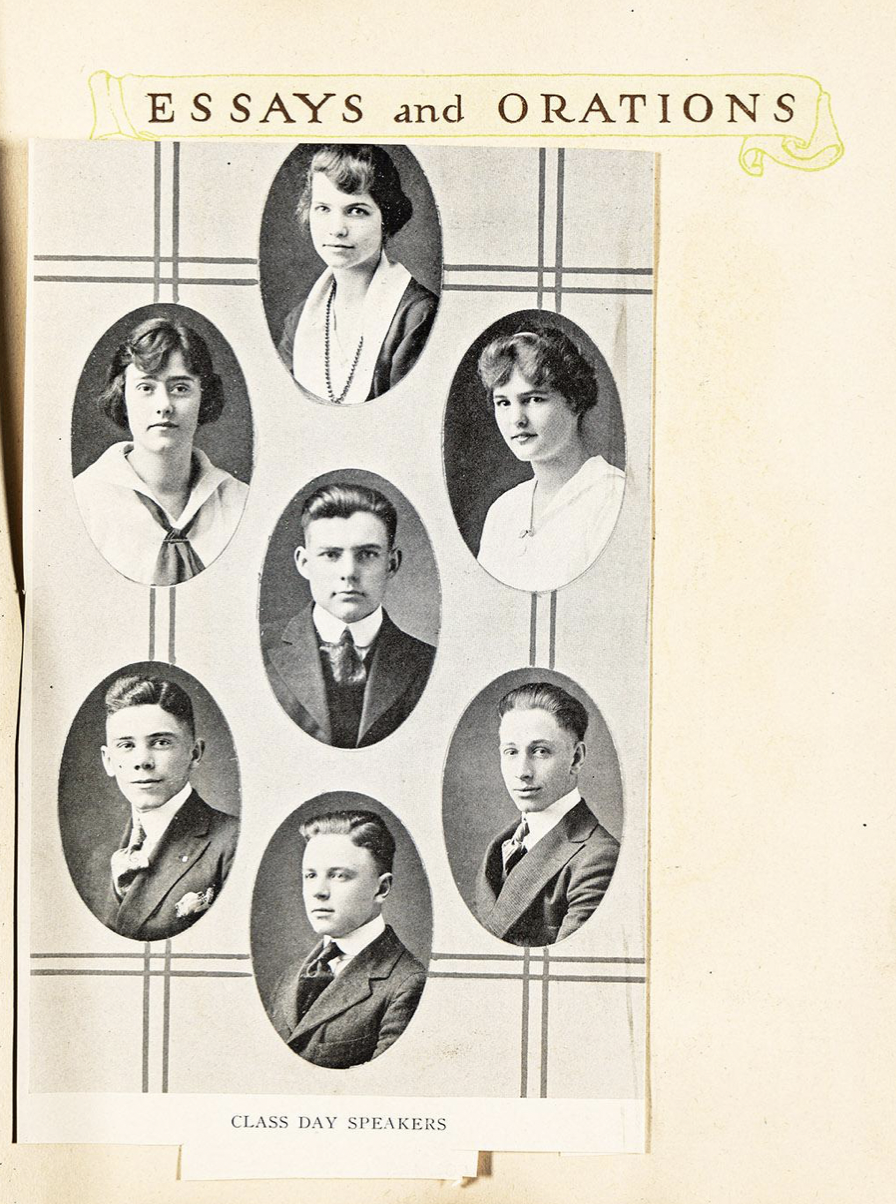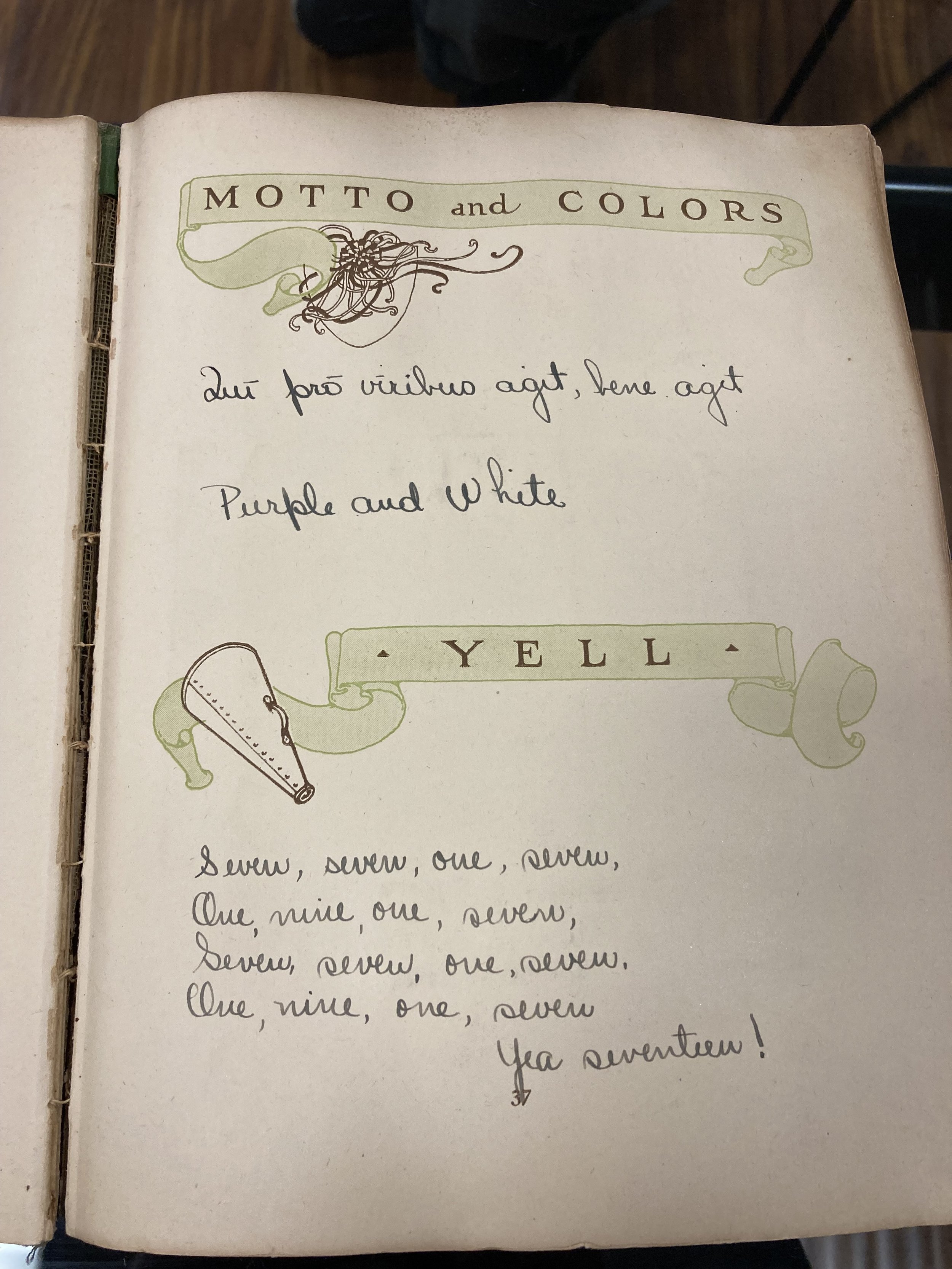Zelma Frances Owen and Ernest Hemingway, Classmates, 1917
Zelma Frances Owen, spring 1917
In the spring of 1917, the Oak Park and River Forest High School in Oak Park, Illinois, published its annual Commencement Memory Book. Among the graduates that year were Ernest Miller Hemingway and Zelma Frances Owen. Hemingway’s copy of his high school commemorative book may or may not still survive, somewhere. Zelma Owen kept hers, though. It surfaced recently, and is now heading to a major private Hemingway collection in New York—for excellent reason.
Hem stares down the camera, center, back row of graduating seniors
Hemingway signed Owen’s book three times. Once, he initialed a drawing, with a jokey arrow pointing to the printed image of a prophet identifying it as himself, above a transcription—likely Owen’s—of the “Class Prophecy” he had composed. Ernest’s chosen iconography for his “Sources of Inspiration” are two smoldering pipes flanking a full beer stein, with a box of Velvet tobacco below.
Hemingway signed himself “Hemingstein” or “Hemingstien” elsewhere when he was at Oak Park; in his classmate Virginia Reil’s high school scrapbook, he added a little couplet to go along with a similar drawing of a frothy beaker: “I’ve never guzzled beer nor wine / And yet they call me Heming ‘stien.’” Hemingway and his friends at Oak Park all had nicknames for each other: Pickles, Bunny, Cohen, Mussy, Butch (an alternate nickname of Hemingway’s own).
The “Prophecy” itself is fascinating; Charles A. Fenton wrote about it in The Apprenticeship of Ernest Hemingway: The Early Years (1954) and it was published in Hidden Hemingway: Inside the Ernest Hemingway Archives of Oak Park (2016). Writing with the setting of a wartime camp with a radio operator transcribing “the news as it comes from the front,” Hemingway’s predictions for his classmates include jobs traditional and novel, serious and humorous—with his picks for the young women far more interesting: girls as bandits and veterinarians, bellhops and butchers, and a temperance advocate; boys as film directors, restauranteurs, and novelists. His sister Marcelline, nicknamed Marc, is to become a “noted lady veterinarian” (who is also a terrible driver). Hemingway delivered the “Prophecy” during the Commencement Day festivities.
Class Day Speakers, Hem in the center
Hemingway was also a member of the swim, track, and football teams, though nowhere was he noted for his athletic play. He also founded a school Shotgun Club, of which his classmate and friend Morris Musselman (“Mussy,” later a writer and filmmaker) recalled, for the Oak Park Hemingway Archives and Hidden Hemingway, “It was all phony, of course. There was no club; there were no contests…Hemingway was the only one of who owned or ever had fired a shotgun.” Hemingway edited the school newspaper, The Trapeze, belonged to a debating club called The Burke Club, and participated in the school play in 1917. Caught up in amateur theatricals by his mother Grace since he was a boy, Hemingway was in the cast of Clyde Fitch’s Beau Brummell as playwright Richard Brinsley Sheridan. A surviving photograph in the Oak Park Archives shows an uncomfortable-looking Ernest in white stockings, a high stock, and very George Washington wig.
Zelma doesn’t mention another classmate who would become a well-known writer, Janet Lewis. Lewis wrote The Wife of Martin Guerre and was a poet as well as a novelist, and the wife of critic Yvor Winters. She does note Musselman’s propensity to comic writing and compliments his acting ability (he starred as Beau Brummell).
School motto, colors, and Class of ‘17 cheer
After he was graduated from high school in the spring of 1917, Hemingway headed into the world of journalism, and wrote for six months for the Kansas City Star. A year after graduation, at the age of 18, Hemingway went to Italy to serve as an ambulance driver for the American Red Cross—since he was not old enough to enlist in the army. Just days before his 19th birthday in July, Hemingway rode his bicycle down to the trenches to hand out mail, chocolate, and cigarettes to Italian soldiers. While among the soldiers, he was severely wounded by an Austrian mortar shell that killed several men next to him, and spent three months in a Milan hospital. Hemingway never entirely recovered from his injuries, and the ongoing pain they caused him.
Zelma
Zelma Owen went to the University of Chicago and studied science. In 1925, she married a fellow scientist named Avery Adrian Morton, and they moved to Watertown, Massachusetts. Morton was a professor at MIT, and they had two daughters. Zelma died in 1972.
All images courtesy of and reproduced with the permission of Glenn Horowitz Bookseller
